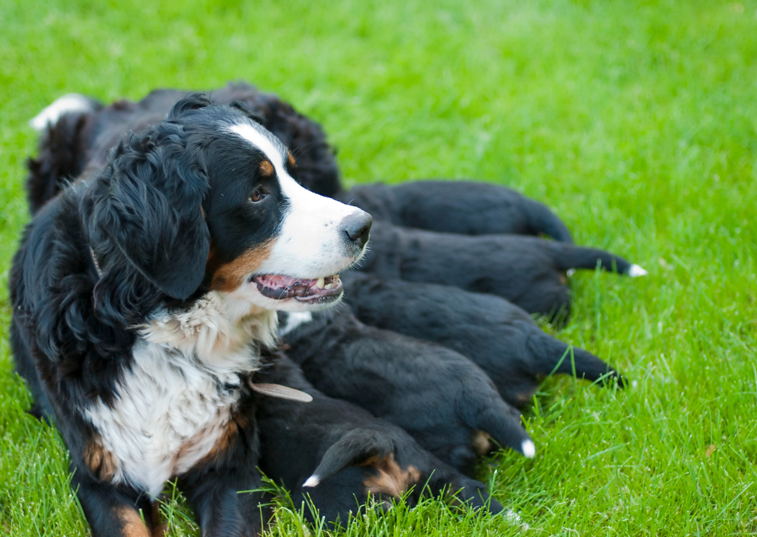As award winning pet insurance specialists we’ve designed 15 cover levels to give you the freedom to choose the right level of cover for you and your dog. Just click the options below to find out more.
Pug dog insurance
Thinking about getting a pug dog as a pet? This guide will tell you everything you need to know about this intelligent, affectionate dog. Learn about how to look after your pug, common health problems affecting this breed and tips on finding the best pug pet insurance cover.
Pug dogs have become a popular choice among pet owners. With their distinctive wrinkly faces and big round eyes, it’s easy to see why.
They might be small in stature, but they’re big in personality. They adore human company and love nothing more than being the centre of attention. They are fun, friendly, and super cute. Here’s what you need to know about becoming a pug dog owner.
Facts about pugs
First, let’s start with the basics. Here are some stats about this ever-so loyal breed of dog.
Vital stats
Size: Small, standing at 25 to 30 cm
Weight: 6 to 8 kg
Coat: Short, sheds a lot
Exercise: From 30 mins up to 1 hour per day
Lifespan: 12 to 15 years
Temperament: Sociable, independent, intelligent
Interesting facts about pugs
Here are a few interesting facts you might not know about pugs:
- A group of pugs is known as a ‘grumbling’ or ‘grumble’ (probably due to the many noises a pug makes going about its daily business)
- Pug dogs can be traced back more than 2,000 years. They were the much revered pets of Chinese emperors. These ‘majestic’ pugs were given the finest foods to eat and special areas to live and sleep
- In the Netherlands in 1572, a pug dog named Pompey famously saved William I, Prince of Orange from Spanish assassins by barking loudly to wake his master
- In the early 19th Century, Queen Elizabeth made the breed popular in England. She owned and loved a number of pugs, including Olga, Pedro, Minka, Fatima, and Venus
- Celebrity pug owners include: Hugh Laurie, Gerard Butler, Ted Danson, Paris Hilton, and Jodie Marsh
4 things to consider before getting a pug
Pugs can make wonderful pets, but it’s worth knowing a bit about the breed before taking the plunge.
If you’re wondering whether a pug is the right pet for you, here are four things to consider:
1. They need a lot of attention
Pugs are a very loyal breed and can become deeply attached to their owners. They make wonderful companions and will happily act like your shadow, so you need to be able to give them the love and attention they crave. When you are a pug parent, it’s all about the head scratches, belly rubs, and cuddles.
2. It can take a while to house train a pug
Pugs tend to be fair weather animals. If they don’t like the look of things outside (i.e. it’s raining), they’ll refuse to go out. And that’s tricky when you’re trying to toilet train them. Create a schedule and make sure you stick to it, however unimpressed your pooch may be.
3. They’re pretty noisy
Because of their short noses, pugs are noisy breathers. But that’s not all. They are also prone to snorting, snoring, wheezing and farting – more often than you might imagine.
4. They’re not great at walking long distances
If you dream of getting a dog that will accompany you on long ambles across the British countryside, a pug might not be the best choice. Sure, they’ll want to keep up with you, but they can get tired very quickly and much prefer short walks around the local park.
Find out more with our list of pug-related facts.
Common health problems in pug dogs
Pugs are loving animals that make great pets, but as a breed pugs do suffer a number of health concerns. Many of these problems stem from the way they look. As a brachycephalic (flat-faced) breed, you might find yourself visiting the vet more than you’d anticipated.
Keeping up to date with routine check-ups at the vet can help keep them fit and healthy. But the earlier you spot potential symptoms and get a diagnosis, the sooner treatment can start. Vet bills can quickly add up, so having insurance for pugs in place can help you cover these costs.
Here are some of the most common health conditions affecting the pug breed.
Breathing issues
A pug’s narrow airway and squashed nose can make breathing difficult. It means they are often only able to breathe through their mouths and can struggle to get enough oxygen when exercising. It also makes it harder for them to pant. As a result, they can’t cool themselves down effectively and are at risk of overheating in the hot weather or after exercising. Being overweight can exacerbate this issue further.
Eye problems
Those distinctive big, round eyes might melt a few hearts, but they also mean pugs can suffer from a range of eye problems. These include dry eye, eye infections, corneal ulcers or eye trauma (caused by shallow eye sockets). If you notice one of your pug’s eyes is closed more than usual or there is discharge from the area, be sure to take them to the vet for advice and treatment.
Skin infections
Part of a pug’s charm is their wrinkly appearance. However, these folds of skin can be breeding grounds for bacteria. It is important that you clean between these folds regularly to stop them from becoming inflamed and infected.
Luxating patellas
The condition known as luxating patella happens when the kneecap becomes displaced and locks up, making it painful to bend the knee. In some instances the kneecap can jump in and out of place, however in most instances it is permanently in the wrong position. Surgery is generally required to reposition the kneecap and make sure it stays put.
Hemivertebrae
When vertebrae in the spine do not form correctly, it can lead to incorrect alignment. In turn, this can lead to the spinal cord and/or nerves being damaged. This usually happens in dogs aged one year or under and can cause pain, instability, loss of movement in the leg and incontinence. Surgery is required to realign the vertebrae.
Want to find out more about our Pug Insurance/Dog Insurance Product?
We’ve listed our key benefits below and you can also take a look at our cover levels, customer reviews and awards.
Ready to get started? Click here to get a quote.
Why choose Purely Pets
Free 24 hour Vet Helpline for all customers
There’s no upper age limit
Easy online claims process
Payments made direct to vet
15 levels of Lifetime cover
Lifetime Cover up to £15,000
Flexible Excess Options
Manage your policy online
Award winning Pet Insurance
How to care for a pug
Owning a dog is a big responsibility and you need to make sure you stay on top of their diet, exercise, grooming and training. Get these things right, and you’ll help to keep your pug happy and healthy.
Here’s how:
Feeding your dog
Whatever your pug was eating before they came to you, try to continue with the same type of food once you get them home. A change in diet can lead to an upset stomach, so any changes need to be made gradually.
Pugs are, by nature, greedy dogs. They will happily eat as much as they can and are prone to becoming overweight. The heavier they are, the harder they find it to breathe. Always weigh portion sizes, don’t feed them leftovers, and keep treats to a minimum.
Exercising your dog
Pugs can be quite lazy and are more than happy to lounge around snoozing all day long. However, it is important that they get enough exercise. They need between 30 minutes and one hour a day, which you can split into two walks. Playing games will give them the motivation they need to stay active. Check out our guide to walking your dog.
Training your dog
Pugs can be pretty stubborn when they want to be and will push your patience to the limits. But with time and repetitive training, you’ll get there. Be extra vigilant with toilet training. Give them a designated toilet area and plenty of praise when they use it properly. If you need additional training support, professional classes are there to help.
Grooming your dog
These short-haired dogs need their coats to be brushed once a week all year round. This will help reduce the amount of fur they shed around the house. You should also clean around their facial folds every day to avoid irritation or infection.
The Purely Pet Promise
At Purely, we’re here to support you. That’s why we offer a 24 Hour Vet Helpline free of charge to all of our customers. Our easy to use online portal ‘Manage My Policy’, enables you to access to your policy 24hrs a day. This provides greater flexibility, allowing you to manage your policy at a time that suits you, so that you can spend more time with your furry friends, and less time managing your insurance. Get a quote
Our Dog insurance cover levels

For your dog

For your dogs, for your cats or for both
Different types of pug dog insurance
A poorly pet is not something anyone wants to dwell on, but injury or illness can happen at any time – and with little warning. To give you peace of mind, you may wish to consider having a pet insurance policy in place.
Regular check-ups means a vet is able to spot any potential issues in plenty of time. This helps you stay on top of their health and increases the chance of a speedy recovery.
Lifetime pet insurance
With vet fee cover that renews every year, lifetime is the most comprehensive pet insurance policy on the market. This is the only type of insurance we offer here at Purely Pets. These types of policies are best opened when your pet is still young, before they have developed any symptoms and before you have had to make any claims.
Maximum benefit pet insurance
This type of policy insures your pet for a set amount of money for a specific condition. There will be a fixed limit for treatment costs – when you’ve reached that amount you will have to cover the costs yourself. There is no time limit for when you can make a claim on a condition – cover will last until the limit is reached.
Time-limited pet insurance
As with maximum benefit insurance, pets are covered for each condition up to a set amount. The difference is that you can only claim on vet bills within a fixed time period (usually up to 12 months). That 12-month deadline starts from when your pet was seen by the vet and/or a diagnosis was made.
Accident-only pet insurance
Accident-only pet insurance is the most basic pet insurance policy on offer, covering your pug for accidents and injury, but not illnesses. Cover is usually for a certain amount per accident – and there may be a time limit on when you can claim per condition.
Is lifetime pug insurance right for you?
The most comprehensive of pet insurances, a lifetime pug insurance policy is generally seen as the premium option. As long as you don’t cancel the policy or let it lapse, your pet will be covered year after year for their entire life.
The main advantages of a lifetime policy are the continual cover for a particular condition and the high limits.It is the ideal cover if your pet suffers from a long-term illness or condition that requires ongoing treatment.
Pugs are at risk of developing long-term health conditions so a lifetime policy could be a good choice. If you are worried about the potentially high treatment costs of medical conditions, lifetime pet insurance reduces the likelihood that you will have to cover those costs yourself.
How can I lower my lifetime pet insurance?
Once you’ve found the right lifetime pet insurance policy for you and your dog, you don’t want to have to worry about the cost. There are various things you can do to lower your pug dog insurance premiums.
Here are 3 tips you might want to consider:
1. Increasing your excess: The higher the excess you pay, the lower your premiums could be. Always make sure you set the amount at a level you can afford.
2. Getting your pet microchipped: A microchipped pet could be cheaper to insure. Speak to your vet to find out more.
3. Taking out insurance when your pet is young and healthy: Pre-existing conditions can make finding pet insurance quite tricky. If you can, insure your pet while they’re still a puppy, before any health conditions develop.
Pug insurance: Finding the right pet insurance
At Purely Pets, we offer a range of lifetime insurance policies designed to give you and your dog the support you need when you need it the most.
Benefits of insuring through Purely Pets can include:
- 24-Hour Vet Helpline
- Online policy management portal
- 5 * Defaqto rated products
Get in touch with our specialist team to compare pet insurance. Apply for your free pet insurance quote today and see which of our dog insurance policies is best for you.
Customer reviews
We’re committed to improving our Pet Insurance products wherever possible, which is why feedback from our customers is so important to us. We’re incredibly proud of our Excellent Trustpilot rating and you can read the latest reviews from our fantastic customers below.
Pet advice & news

Why do Great Danes have short life spans?
16/07/24
As a pet parent, it's quite disheartening to realise that your beloved Great Dane has a rather limited life span, especially when compared to other dog breeds. But, have you ever wondered why do Great Danes have such a short life span?

Labrador puppies: Understanding and managing biting behaviour
15/07/24
Labrador puppies are endearing, fluffy bundles of joy that can fill any home with love and laughter. However, why do Labrador puppies bite so much? Their natural teething phase, which often involves playful biting, can become a concern for many pet owners. This guide aims to help you understand and manage the biting behaviour of your Labrador puppy, ensuring a safe and enjoyable pet owning experience.

What type of complications can happen after a dog c-section in the UK?
11/07/24
A dog's caesarean section (commonly referred to as a C-section) is a significant surgical procedure often performed as an emergency when a pregnant dog experiences difficulty with natural birth.
Find out more
You can find out more about our Dog Insurance product below and there’s more help available on our FAQs page.
According to the Association of British Insurers report, the average cost of Pet Insurance in 2019 has gone down £8 to £271 annually whilst the average claim has gone up by £29 to £822.
Depending on the type of pet cover you choose, you can be covered for vets bills for accidents, illness, or both up to a fixed monetary amount. Many policies will give you added benefits such as cover for dentistry, loss of pet, third party liability and overseas travel.
We provide dog insurance & cat insurance - at a variety of different levels to suit yours & your pets needs.
Pet insurance doesn’t normally cover you for any conditions that already exist before you purchase, so always check this if are looking to move to a new provider or if you are taking out insurance for the first time but your pet has pre-existing medical conditions.
There will also generally be an excess (a fixed amount that you contribute to any claim) or a co-payment excess (normally a percentage of the total claimed amount that you will contribute to any claim) on your policy that you will have to pay.
Other common exclusions for pet insurance are breeds listed under the Dangerous Dogs Act 1991, cover for elective, routine or cosmetic treatment and cover for illness or accidents within a specified waiting period
So you have decided to get your pet insured, but now you are faced with a number of policies to choose from! Here at Purely Pets we offer 15 levels of Lifetime Cover - allowing you to choose the policy that suits your budget and requirements.
These policies offer cover for accidents and illnesses for the pet’s lifetime. This is dependent upon you renewing the policy each year and keeping up to date with premiums. These are usually the most expensive policies, because they provide the most comprehensive cover.
All of our Lifetime policies offer you a pot of money per year that will cover all accidents and illnesses. We only offer Lifetime cover to our customers as we believe it is the most comprehensive cover available.
Like humans, our pets are more likely to be affected by illness as they get older. This means that every year your insurance premium will increase even if you haven’t made a claim. This increase will be significant if you have claimed.
Purely Pets can provide you with an online quote for your pet in minutes.
With a range of lifetime options available offering vets fees cover from £1,000-£15,000 and the option to choose your excess we can help you find the right cover for you and your pet at a price that suits you.
We also have a specialist Pet Insurance team that you can call to get a quote or discuss your options in more detail.













